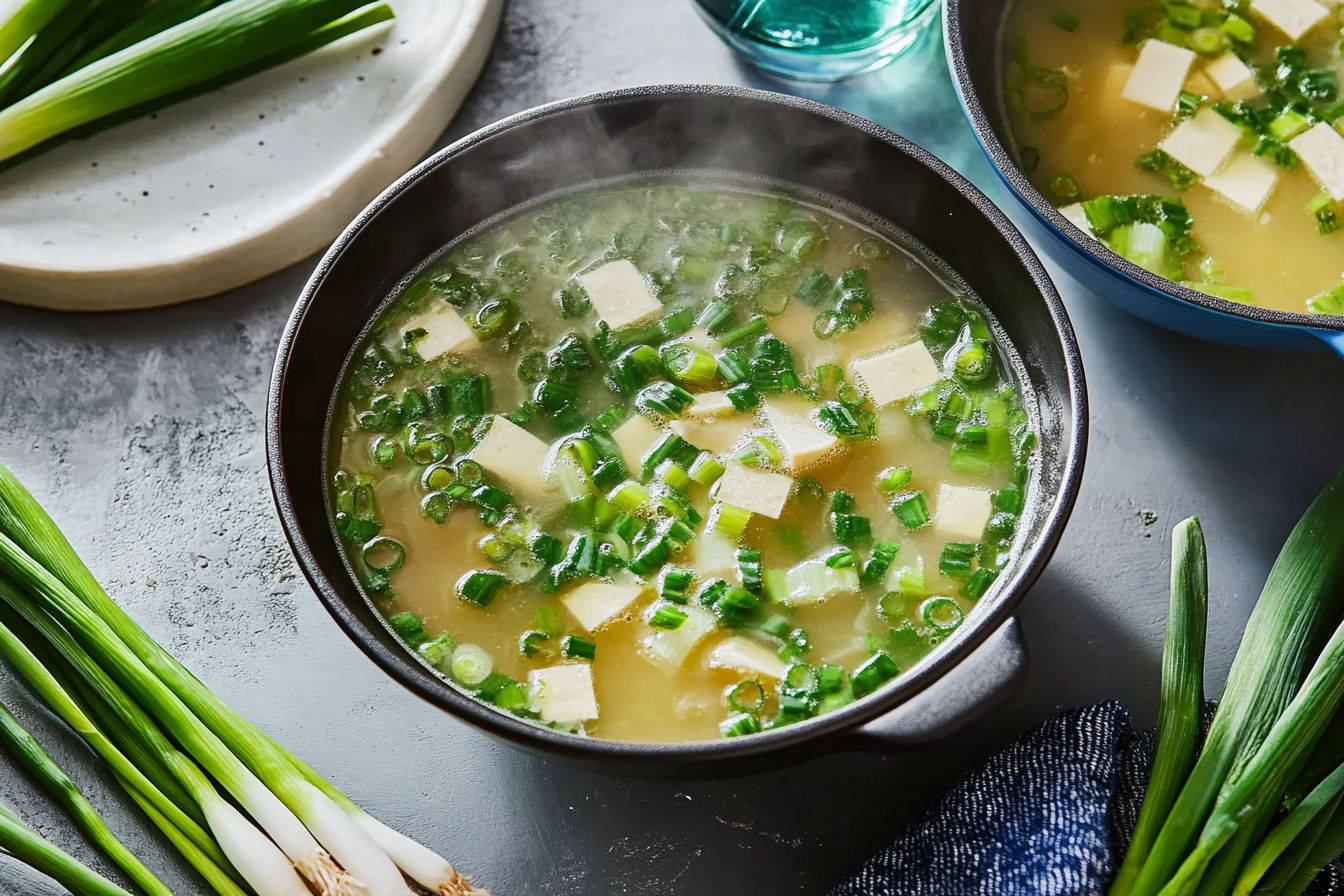Introduction to Miso Soup
What is Miso Soup?
Miso soup recipe is a traditional Japanese dish known for its comforting warmth and rich umami flavor. Made from a broth flavored with miso paste and dashi, it typically includes tofu, green onions, and sometimes seaweed. This miso soup recipe is not only a staple in Japanese households but also enjoys global popularity due to its simplicity and health benefits. Its soothing taste makes it perfect for all seasons.
Why is Miso Soup Popular?
The popularity of miso soup lies in its health benefits and versatility. It is packed with protein, thanks to the tofu, and rich in minerals due to the miso paste and dashi. Moreover, miso is known for its ability to enhance digestion and provide probiotics. Many people turn to miso soup for a quick, nutritious meal. To learn how to make the perfect miso soup base, check out this guide to making homemade dashi broth.
Additionally, the ability to personalize your miso soup with various ingredients makes it an adaptable dish. For example, you can add mushrooms, seaweed, or even vegetables to cater to different dietary preferences. Looking for the best tofu for your soup? Find recommendations in this guide on the best types of tofu for soup.
Key Ingredients in Miso Soup
The core components of miso soup are miso paste, dashi, tofu, and green onions. Each ingredient plays a vital role in achieving the signature flavor of the soup. The miso paste provides a salty, fermented taste, while the dashi offers a rich umami undertone. Tofu adds texture, and green onions give a burst of freshness. By understanding these ingredients, you can create a balanced and flavorful miso soup that satisfies the palate.
Basic Miso Soup Recipe
Print
Classic Miso Soup Recipe
- Total Time: 20 minutes
- Yield: 6 servings 1x
- Diet: Vegetarian
Description
A simple, traditional recipe for miso soup made with miso paste, tofu, green onions, and dashi.
Ingredients
- 16 cups water
- 8 teaspoons dashi granules
- 12 tablespoons miso paste
- 4 (8 ounce) packages silken tofu, diced
- 8 green onions, sliced diagonally into 1/2 inch pieces
Instructions
- In a large pot, bring the water to a boil.
- Add the dashi granules and stir until dissolved.
- Lower the heat and whisk in the miso paste until fully dissolved.
- Add the tofu and simmer for 5-7 minutes.
- Stir in the green onions just before serving.
Notes
For a richer flavor, let the soup sit for a few minutes before serving.
- Prep Time: 10 minutes
- Cook Time: 10 minutes
- Category: Soup
- Method: Stovetop
- Cuisine: Japanese
Nutrition
- Serving Size: 1 bowl (approx. 1.5 cups)
- Calories: 150 kcal
- Sugar: 2g
- Sodium: 1000mg
- Fat: 8g
- Saturated Fat: 1g
- Unsaturated Fat: 7g
- Trans Fat: 0g
- Carbohydrates: 12g
- Fiber: 2g
- Protein: 9g
- Cholesterol: 0mg
Keywords: Classic Miso Soup Recipe
For a gluten-free version, make sure to choose gluten-free miso paste and dashi. Learn more in this gluten-free miso soup article.
STEPS :
Step 1
Gather all ingredient
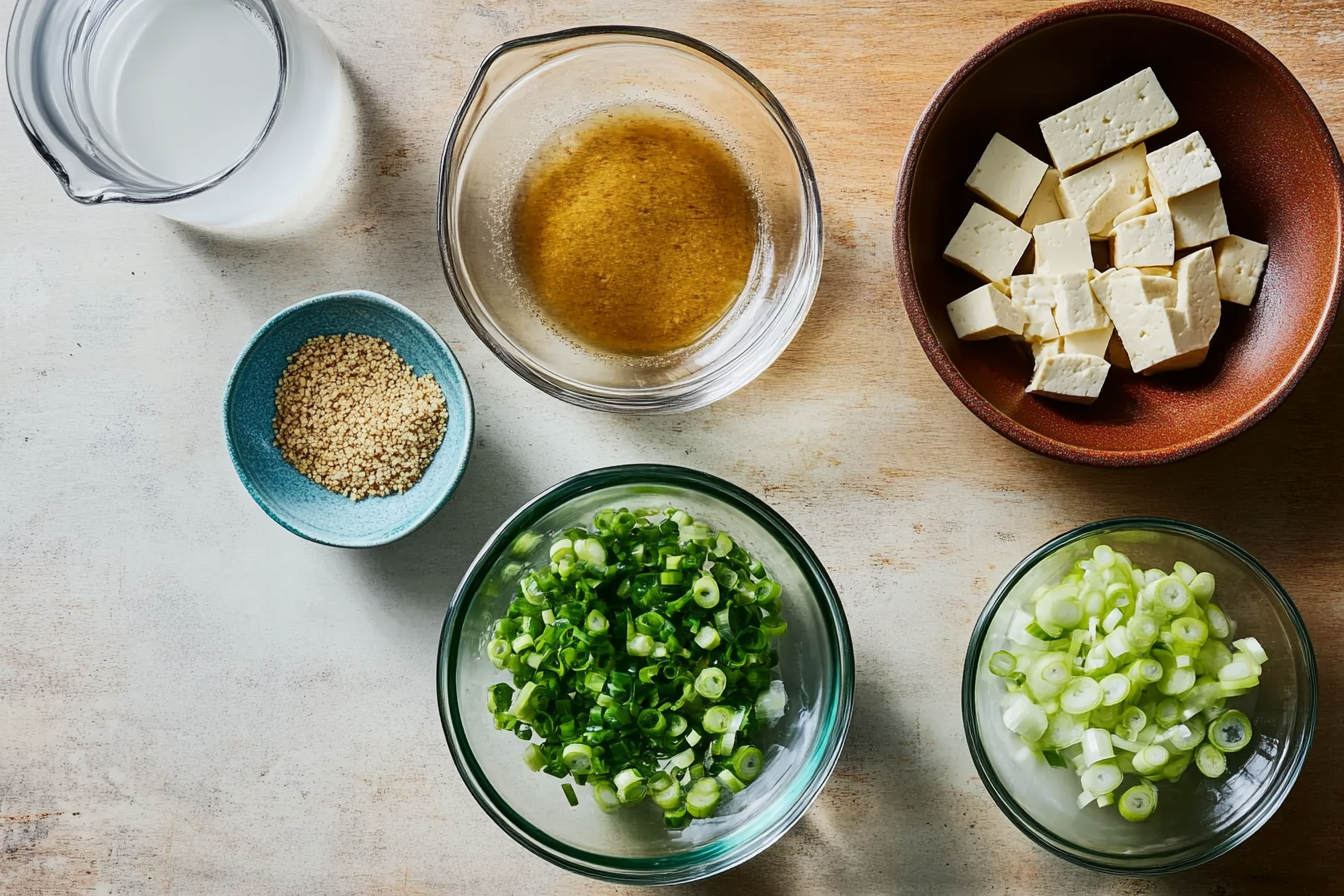
Step 2
In a medium saucepan, combine water and dashi granules over medium-high heat and bring to a boil.
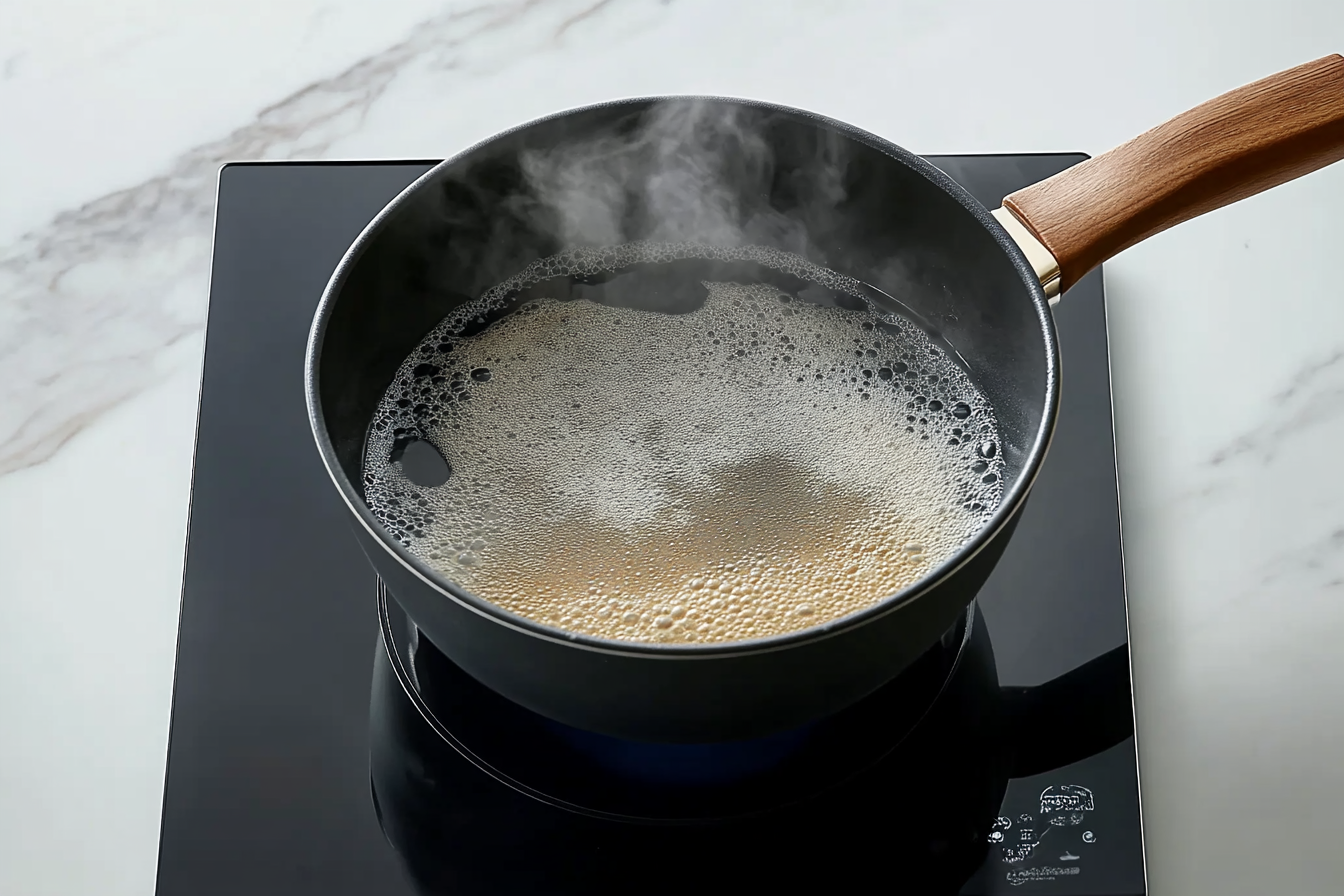
Step 3
Lower the heat to medium and whisk in the miso paste.
Step 4
Step 5
Step 6
Enjoy !
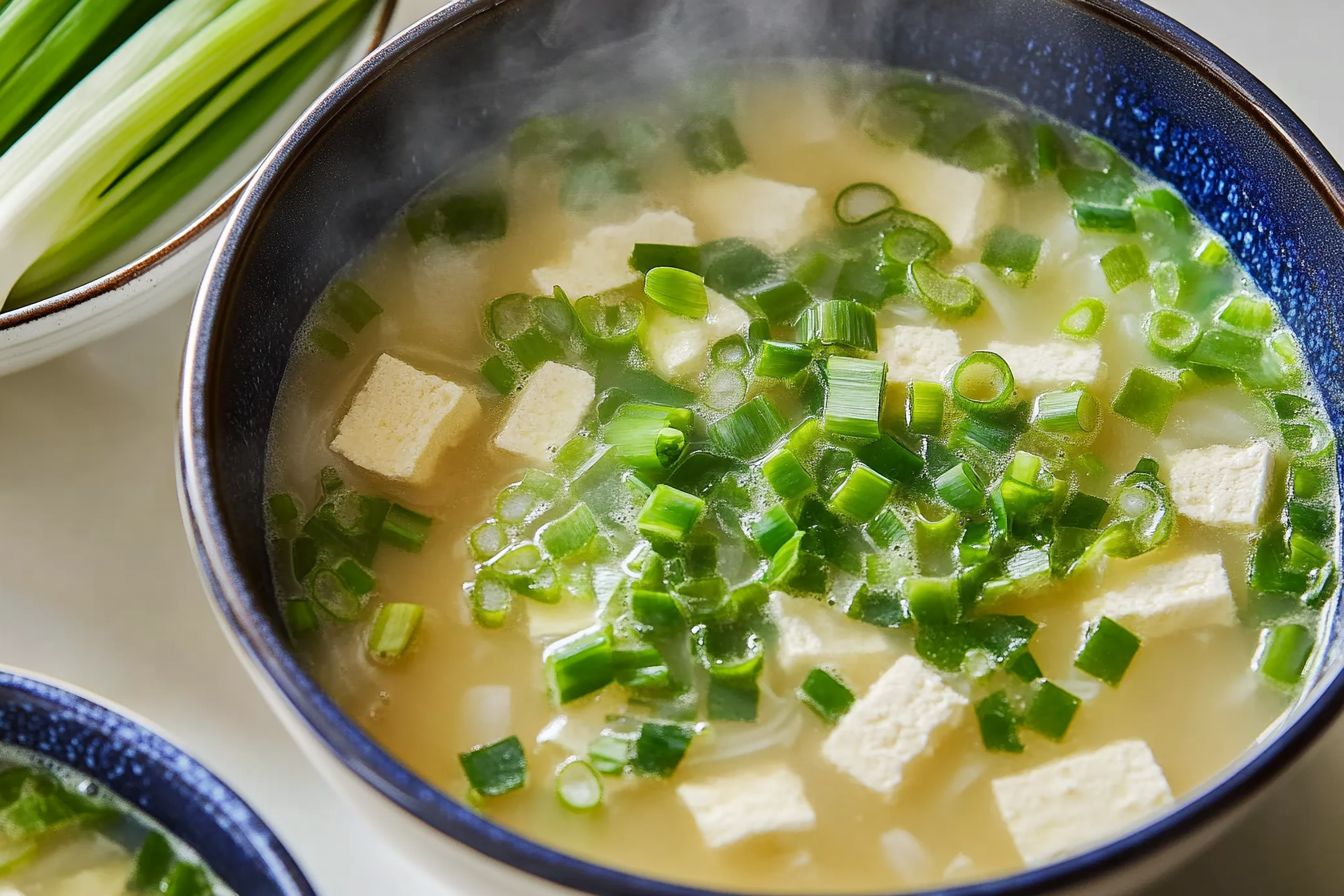
Advanced Techniques for Flavor Enhancements
Exploring Miso Paste Varieties
Miso paste is the backbone of miso soup, and choosing the right type can greatly impact the flavor. There are several varieties, including white miso, red miso, and yellow miso. White miso is milder and sweeter, perfect for delicate soups, while red miso offers a stronger, saltier taste. Yellow miso falls somewhere in between. Experimenting with these pastes will allow you to customize your miso soup to match your taste preferences.
Adding Kombu for Extra Umami
If you want to take your miso soup to the next level, consider adding kombu, a type of dried seaweed. Kombu is packed with umami, which enhances the soup’s savory depth. Simply add a few pieces of kombu to your dashi and let it simmer before removing. The seaweed’s natural glutamates boost the overall flavor, providing a richer, more complex broth.
Additional Toppings and Add-ins
While the classic Japanese soup recipe is delicious on its own, you can elevate the dish by adding various toppings. Try adding shiitake mushrooms, wakame seaweed, or even a soft-boiled egg for extra protein. These additions not only enhance the flavor but also improve the texture and nutrition of your soup. Feel free to get creative and adjust the toppings to suit your dietary needs or flavor preferences.
By incorporating these advanced techniques, you can make your miso soup even more flavorful and personalized. Whether you’re experimenting with miso paste varieties or adding kombu for extra depth, each adjustment brings you closer to the perfect bowl of soup. For more advanced recipes visit cookingwhite.
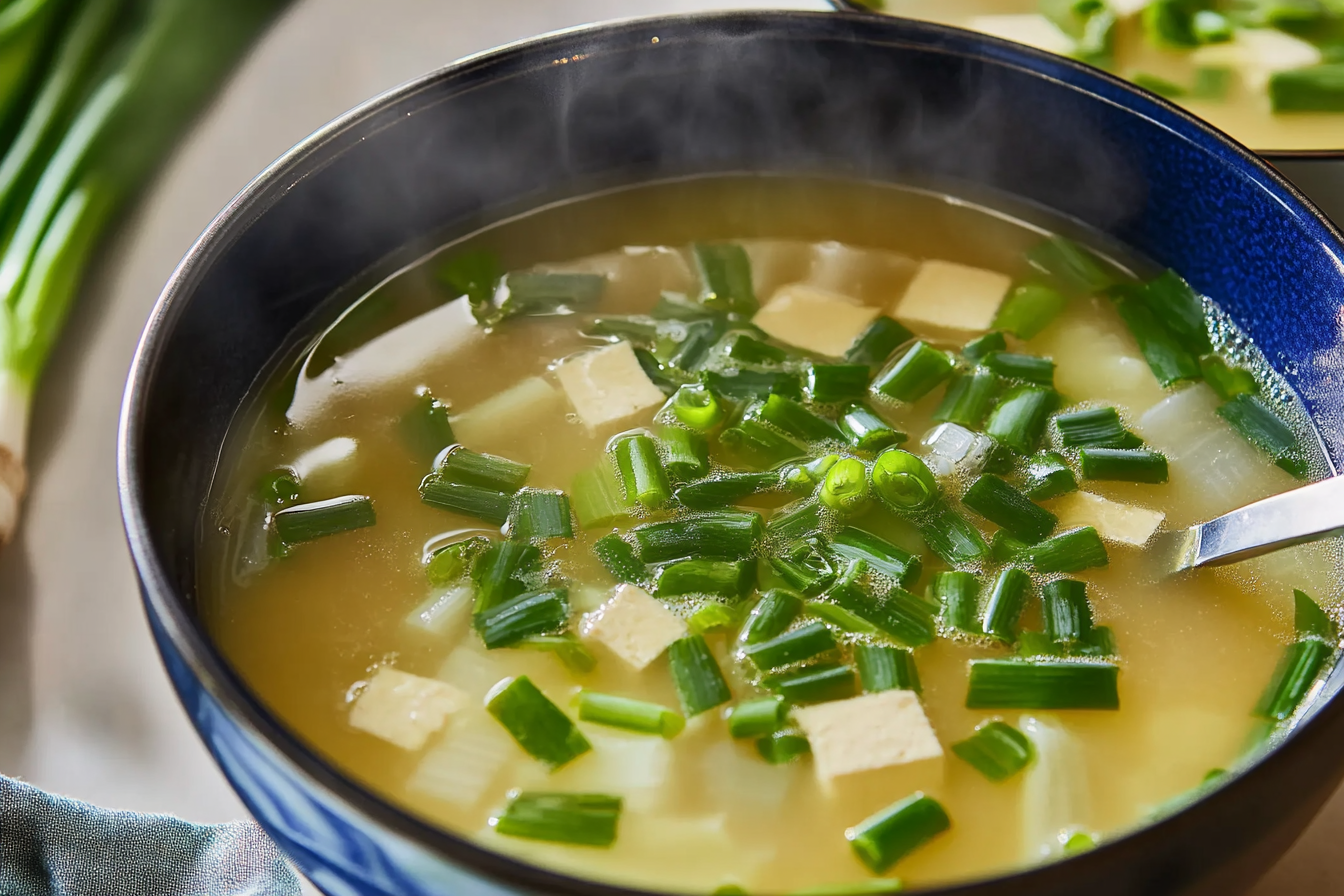
Maintenance Tips for Miso Soup
Storing Miso Soup
Reheating Miso Soup
When reheating miso soup, be sure to do it gently. Avoid bringing the soup to a boil, as this can alter the texture of the tofu and make the broth overly salty. Instead, heat it over low to medium heat, stirring occasionally. If the soup thickens too much, add a splash of water to reach your desired consistency.
Freezing Miso Soup
While it’s possible to freeze miso soup, some components, such as tofu, may change in texture upon thawing. If you plan to freeze your soup, be sure to remove the tofu before freezing. After thawing, you can add fresh tofu for the best texture. To freeze, store the soup in an airtight container or freezer-safe bag. It will stay good in the freezer for up to 1 month.
These maintenance tips will help ensure your miso soup stays fresh and tasty, even if you have leftovers. By following proper storage and reheating methods, you can enjoy this delicious dish whenever you like without losing its flavor and texture.
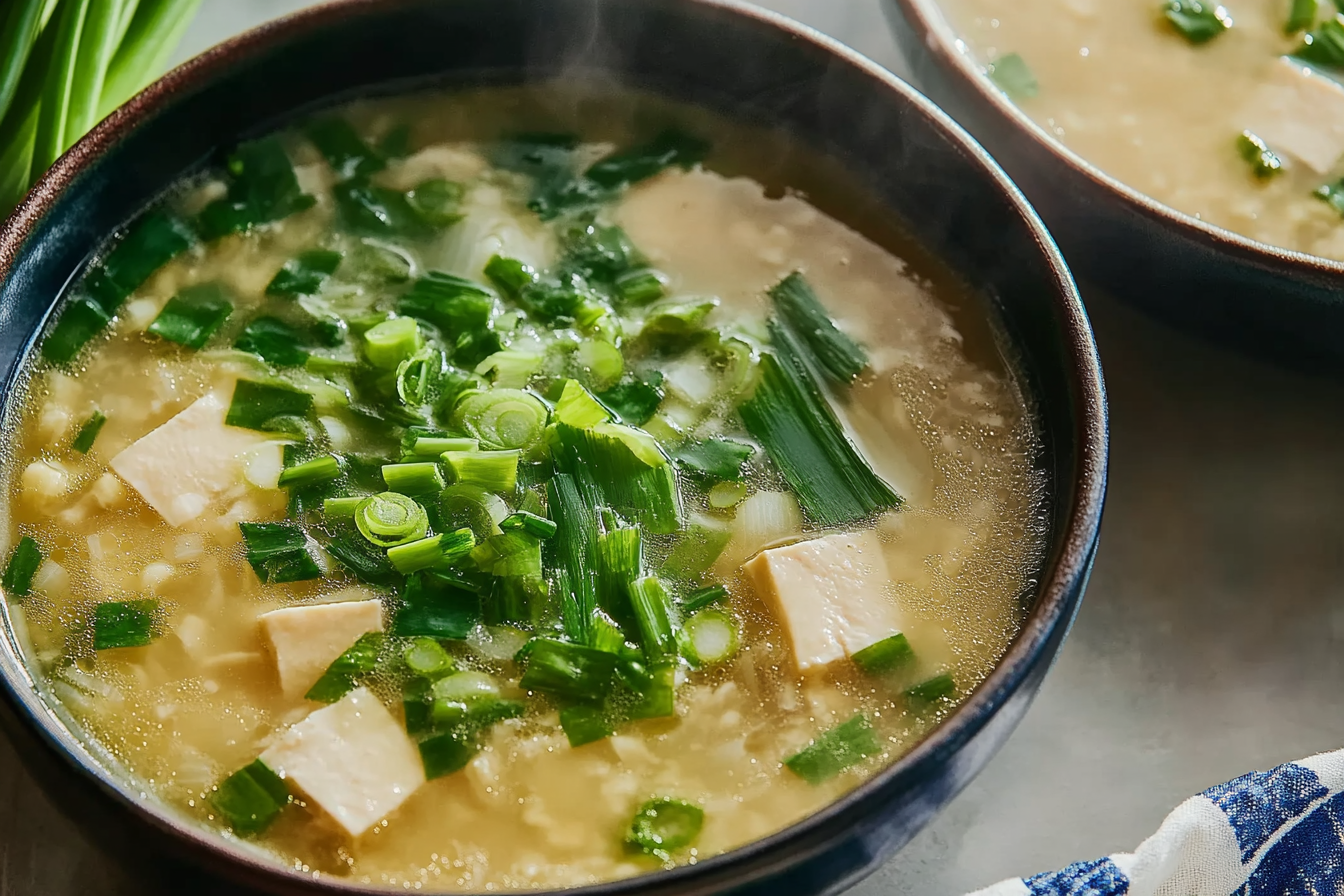
Dietary Adaptations for Miso Soup
Vegan Miso Soup
Vegan miso soup is easy to make by swapping out a few ingredients. Ensure that both your dashi and miso paste are plant-based. Dashi is often made with fish stock, but you can substitute it with a vegetable-based dashi or kombu-based broth. This change makes the soup completely vegan without sacrificing flavor. With the right miso paste and broth, you’ll still get the rich umami flavor of the original.
Low-Sodium Miso Soup
For a healthier version, you can make low-sodium miso soup by selecting low-sodium miso paste and using less salt in your dashi. Sodium levels in traditional miso can be quite high, but there are many miso options available that are lower in sodium. Reducing the amount of miso paste can also help control the saltiness while keeping the soup flavorful.
Gluten-Free Miso Soup
To make miso soup gluten-free, ensure that the miso paste and dashi are both gluten-free. Some dashi granules contain wheat, so opt for gluten-free dashi instead. Many brands offer gluten-free miso paste, which is made without wheat. With these adjustments, you can enjoy a bowl of delicious miso soup that’s safe for those with gluten sensitivities.
By making these simple adaptations, you can create a version of miso soup that fits a variety of dietary preferences without compromising on taste or nutrition. Whether you’re vegan, following a low-sodium diet, or avoiding gluten, you can still enjoy this classic Japanese soup in a way that suits your needs.
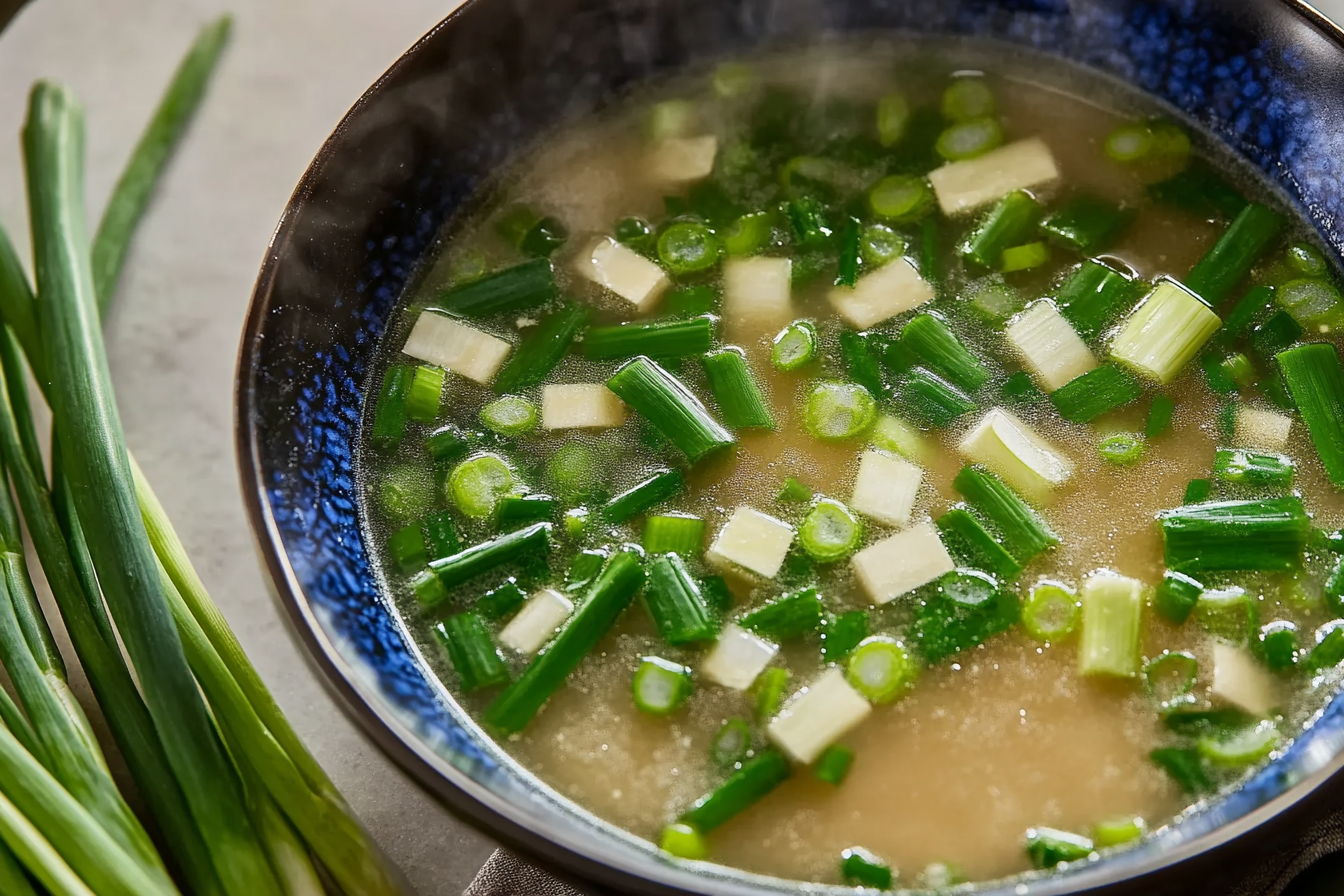
Frequently Asked Questions About Miso Soup
What Is the Best Miso Paste for Miso Soup?
The best miso paste for miso soup depends on your taste preferences. White miso is sweeter and milder, ideal for delicate soups. Red miso, on the other hand, is stronger and saltier, perfect for those who enjoy a more robust flavor. You can also experiment with yellow miso, which offers a balance between the two. Each type will give your soup a unique taste, so try different varieties to find your favorite.
Can I Use Tofu Alternatives in Miso Soup?
Yes, you can use tofu alternatives in your miso soup. If you don’t like tofu or need a substitute, try using tempeh for a firmer texture or edamame for added protein. Both options work well in miso soup and provide a similar nutritional profile. Another alternative is seitan, which has a chewy texture and can mimic the mouthfeel of tofu.
How Can I Make Miso Soup More Flavorful?
To enhance the flavor of your miso soup, try adding kombu or shiitake mushrooms to the broth. Kombu adds extra umami, while mushrooms bring a deep, earthy flavor. You can also experiment with additional seasonings like sesame oil or a splash of soy sauce to elevate the taste further. Adding these ingredients will create a richer, more complex soup.
These answers to common miso soup questions should help you tailor the recipe to your personal tastes. Whether adjusting the miso paste or experimenting with different ingredients, there’s always a way to make this classic Japanese soup your own.


